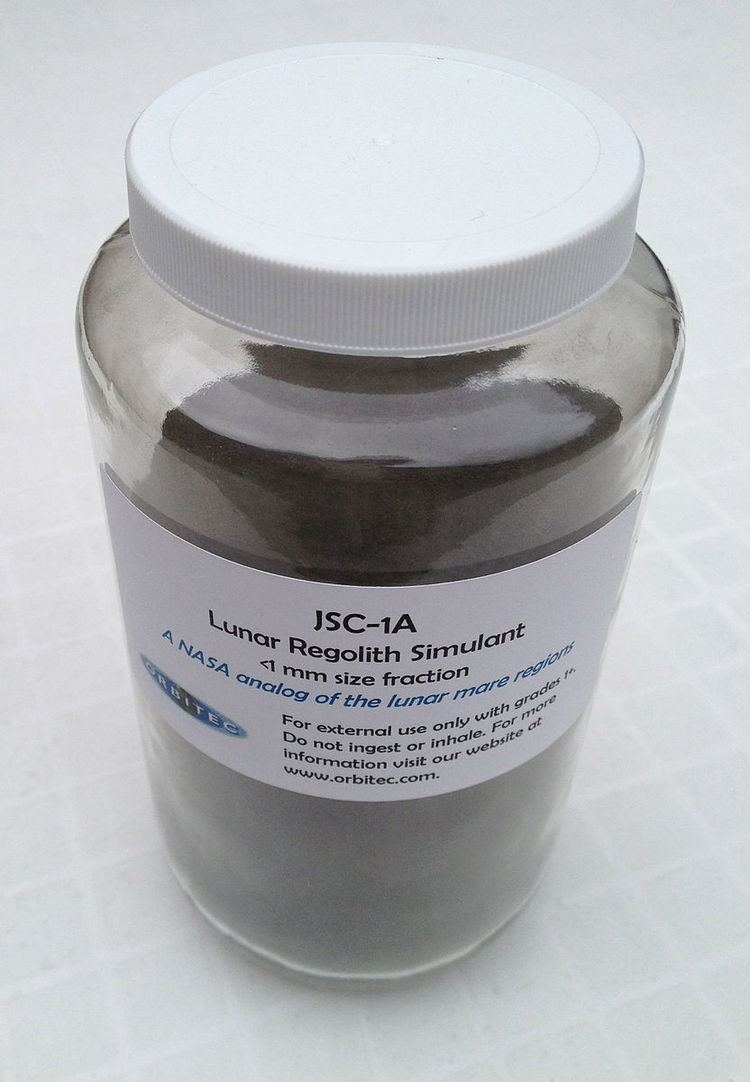 | ||
Simulating the moon s surface lunar regolith simulant sample
A lunar regolith simulant is a terrestrial material synthesized in order to approximate the chemical, mechanical, and engineering properties of, and the mineralogy and particle size distributions of, lunar regolith. Lunar regolith simulants are used by researchers who wish to research the materials handling, excavation, transportation, and uses of lunar regolith. Samples of actual lunar regolith are too scarce, and too small, for such research.
Contents
- Simulating the moon s surface lunar regolith simulant sample
- MLS 1
- JSC 1
- JSC 1A
- FJS 1
- FJS 2
- FJS 3
- Other simulants
- References
MLS-1
MLS-1 (Minnesota Lunar Simulant 1) is a lunar simulant that was developed at the University of Minnesota. The basaltic rock used in this simulant was mined from a quarry in Duluth, Minnesota. It contains plagioclase, olivine, pyroxene and ilmenite as some of its major minerals. The minerals and grain sizes resemble the chemistry of the Apollo 11 mare material (specifically soil sample 10084).
JSC-1
JSC-1 (Johnson Space Center Number One) is a lunar regolith simulant that was developed in 1994 under the auspices of NASA and the Johnson Space Center. Its developers intended it to approximate the lunar soil of the maria. Unlike MLS-1, it simulates a soil that is poor in titanium. It is a basaltic ash with a high glass content.
Toutanji et al. used JSC-1 to create a sulphur-based Lunarcrete simulant.
JSC-1A
In 2005, NASA contracted with Orbital Technologies Corporation (ORBITEC) for a second batch of simulant in three grades:
NASA received 14 metric tons of JSC-1A, and one ton each of AF and AC in 2006. Another 15 tons of JSC-1A and 100 kg of JSC-1F were produced by ORBITEC for commercial sale. An 8-ton sand box of commercial JSC‐1A is available for daily rental from the California Space Authority.
JSC-1A can geopolymerize in an alkaline solutions resulting in a hard, rock-like, material. Tests show that the maximum compressive and flexural strength of the 'lunar' geopolymer is comparable to that of conventional cements.
FJS-1
FJS-1 (Fuji Japanese Simulant 1) was developed in Japan from Mount Fuji area basalts. The grain size and mineralogy of these basalts simulate well the samples from the Apollo 14 mission.
FJS-2
FJS-2 is similar to FJS-1 however olivine was added to change the composition slightly. FJS-2 is a better Apollo 14 simulant than FJS-1.
FJS-3
FJS-3 is composed of the root simulant, FJS-1, with added olivine and ilmenite. FJS-3 is a good simulant for Apollo 11 samples.
Other simulants
Other simulants include:
